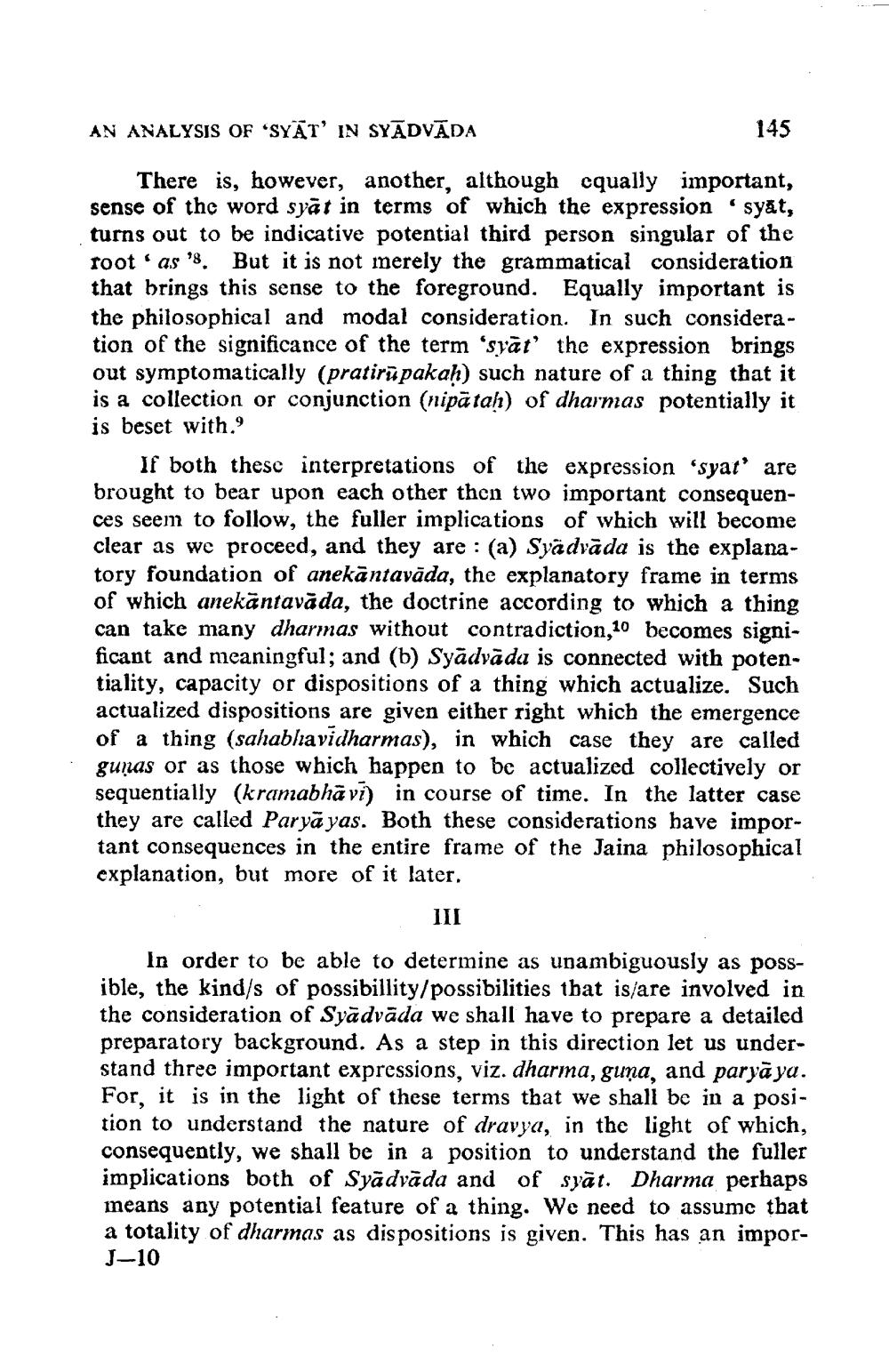________________
AN ANALYSIS OF "SYĀT' IN SYĀDVĀDA
145
There is, however, another, although equally important, sense of the word syāt in terms of which the expression syat, turns out to be indicative potential third person singular of the root' as '8. But it is not merely the grammatical consideration that brings this sense to the foreground. Equally important is the philosophical and modal consideration. In such consideration of the significance of the term 'syāt' the expression brings out symptomatically (pratirūpakah) such nature of a thing that it is a collection or conjunction (nipā tah) of dharmas potentially it is beset with.
If both these interpretations of the expression "syat' are brought to bear upon each other then two important consequences seem to follow, the fuller implications of which will become clear as we proceed, and they are : (a) Syädvāda is the explanatory foundation of anekāntavāda, the explanatory frame in terms of which anekāntavāda, the doctrine according to which a thing can take many dharmas without contradiction,10 becomes significant and meaningful; and (b) Syādvāda is connected with potentiality, capacity or dispositions of a thing which actualize. Such actualized dispositions are given either right which the emergence of a thing (sahabliavidharmas), in which case they are called gunas or as those which happen to be actualized collectively or sequentially (kramabhāvi) in course of time. In the latter case they are called Paryā yas. Both these considerations have important consequences in the entire frame of the Jaina philosophical explanation, but more of it later.
III
In order to be able to determine as unambiguously as possible, the kind/s of possibillity/possibilities that is/are involved in the consideration of Syādvāda we shall have to prepare a detailed preparatory background. As a step in this direction let us understand three important expressions, viz. dharma, guma, and parya ya. For, it is in the light of these terms that we shall be in a position to understand the nature of dravya, in the light of which, consequently, we shall be in a position to understand the fuller implications both of Syādvāda and of syāt. Dharma perhaps means any potential feature of a thing. We need to assume that a totality of dharmas as dis positions is given. This has an imporJ-10




